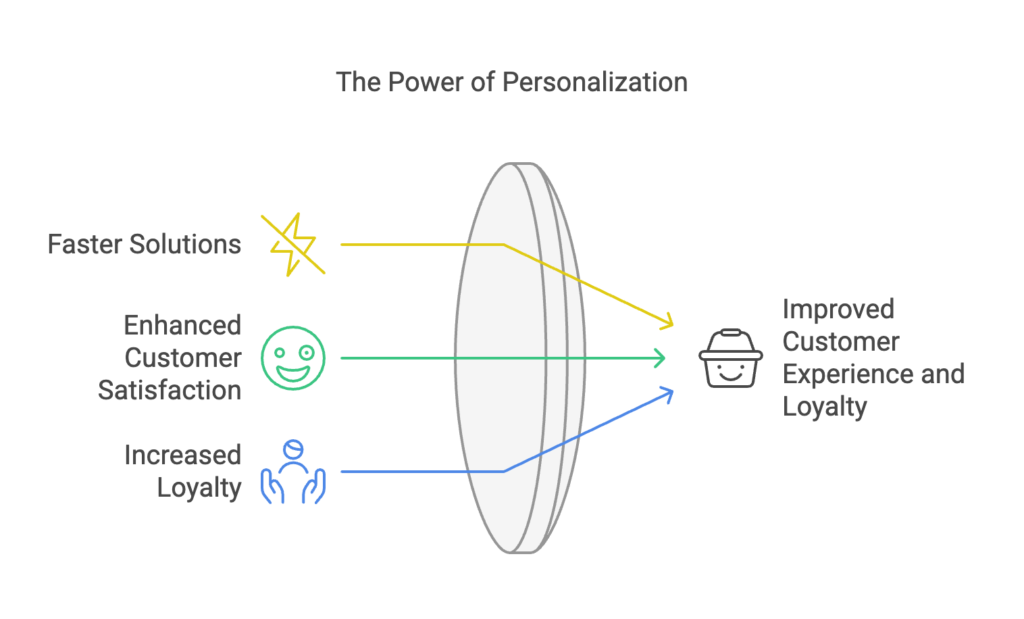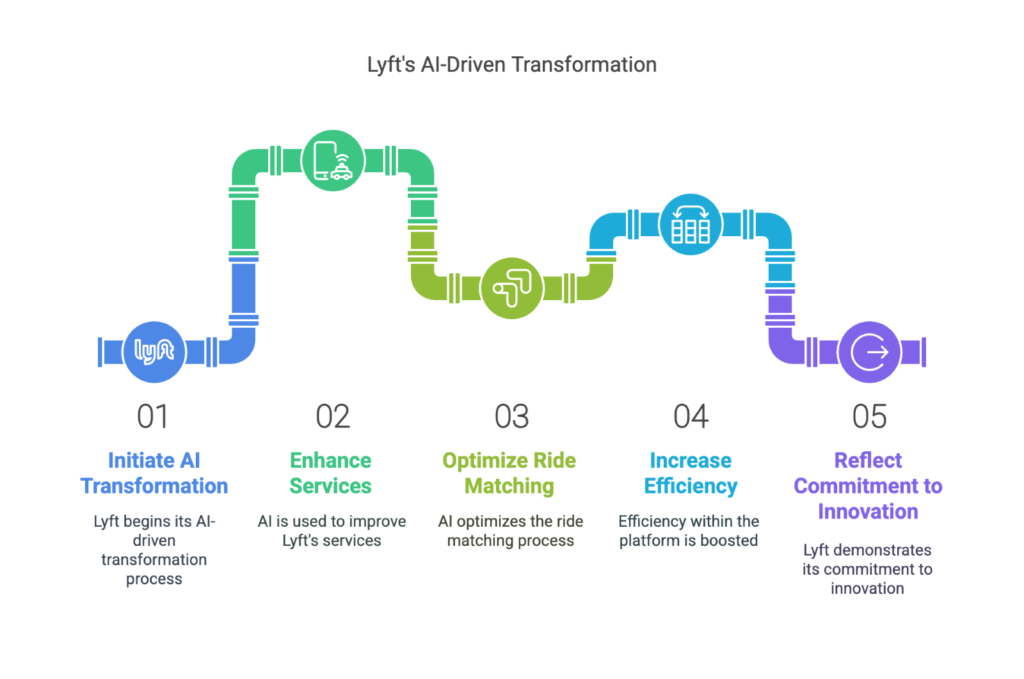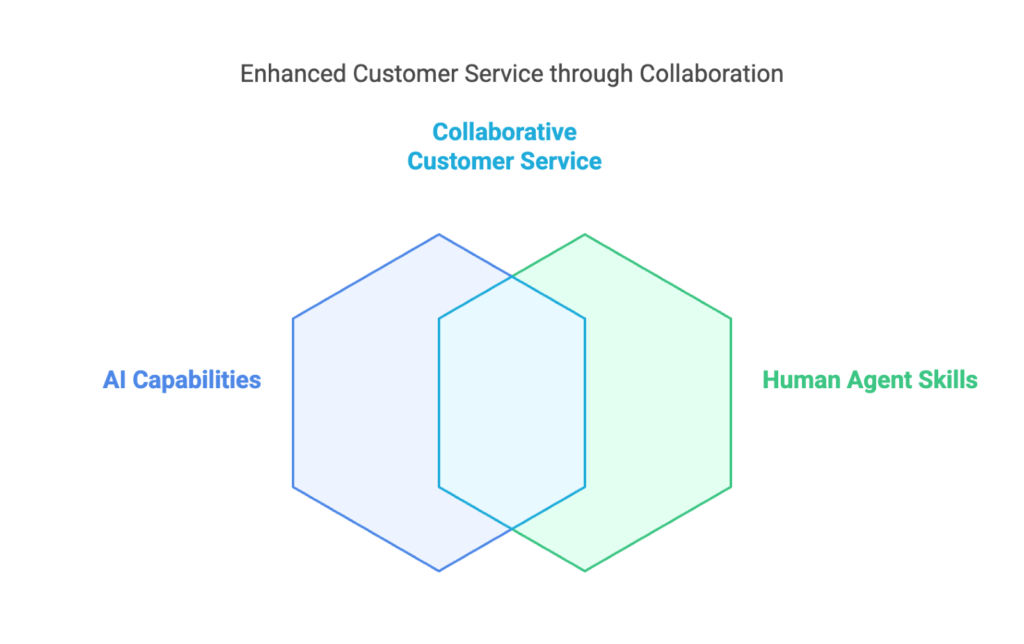Imagine calling customer service and getting stuck on hold for what feels like forever. By the time you reach a human, you’re already frustrated. Now, picture this instead: You ask a question, and an AI-powered assistant answers instantly—no waiting, no elevator music.
AI is changing the way companies handle customer service, making it faster, smarter, and more efficient. From chatbots that answer basic questions to AI agents that can solve complex problems, businesses are using technology to improve customer support. But how does it all work? And what does it mean for the future of customer service? Let’s break it down.
Section 1: The Rise of AI in Customer Service
In today’s fast-paced world, businesses must keep up with rising customer expectations. AI is stepping in as a game-changer, enabling faster response times, personalized interactions, and round-the-clock support. From virtual assistants handling inquiries to predictive algorithms anticipating customer needs, AI is revolutionizing the way companies deliver services. But what exactly is driving this shift, and why is AI becoming an essential tool in customer support? Let’s explore.
AI-Powered Chatbots: The New Frontline Helpers
Think of AI chatbots as friendly store greeters. They can answer common questions like “What are your store hours?” or “Do you have this product in stock?” This frees up human employees to handle more complicated tasks. For example, companies are finding various ways to use AI for customer service and support. When they implement those ideas, they learn how to tap AI technology to better understand and serve clients.
Real-World Success Stories
Many businesses are already seeing the benefits of using AI in customer service. For instance, ride-hailing company Lyft has partnered with Anthropic to utilize the Claude AI assistant for managing customer service inquiries. The implementation is already in effect, primarily assisting drivers, and has reportedly reduced the resolution time for service requests by 87%.
Similarly, the Commonwealth Bank of Australia (CBA) is set to enhance its AI capabilities by deploying an AI agent to assist its business customers with queries and provide ChatGPT-style responses. This initiative aims to offer personalized banking experiences, facilitating quicker payments and more confident transactions.
The Numbers Speak for Themselves
Recent studies show that AI is making a significant impact on customer service. According to Zendesk, 59% of consumers believe generative AI will change how they interact with companies in the next two years. Additionally, 75% of consumers who have already used generative AI think it will change their customer service experiences in the near future.
Looking Ahead
As AI continues to evolve, its role in customer service is expected to grow. It’s like adding more self-checkout stations as the store gets busier; the more we use AI, the more efficient and satisfying the customer experience becomes. Businesses that embrace these technologies are likely to stay ahead of the curve, providing faster and more effective support to their customers.
In the next section, we’ll explore how AI not only speeds up customer service but also personalizes the experience, making each interaction feel unique and tailored to individual needs.
Section 2: Personalizing Customer Service with AI
Imagine walking into your favorite coffee shop, and the barista knows your usual order—a hot chocolate with extra marshmallows. It feels good to be recognized, right? AI aims to bring that same personal touch to customer service, making each interaction feel special.
How Does AI Make Service Personal?
AI can study your past interactions, preferences, and behaviors to understand what you like. It’s like a friend remembering your favorite movie genres and suggesting new films you’d enjoy. By analyzing data, AI can predict what you might need or want, offering suggestions or solutions tailored just for you.
Real-Life Examples of AI Personalization
- Online Shopping: Many online stores use AI to recommend products based on your browsing and purchase history. For instance, if you’ve been looking at basketball shoes, the website might highlight related items like sports socks or athletic wear. This makes shopping easier and more enjoyable.
- Entertainment Platforms: Streaming services often suggest shows or movies based on what you’ve watched before. If you enjoyed a particular series, the platform might recommend similar content, helping you discover new favorites without endless searching.
Benefits of AI Personalization
- Faster Solutions: AI can quickly identify your needs and provide relevant answers or products, reducing the time you spend searching or waiting for assistance.
- Enhanced Customer Satisfaction: When services feel tailored to you, it creates a sense of being valued, leading to a more positive experience.
- Increased Loyalty: Personalized experiences can make you more likely to return to a service or brand, knowing that your preferences are understood and catered to.

Challenges to Consider
While AI-driven personalization offers significant advantages, it also comes with notable challenges that businesses and consumers should be aware of.
- Data Privacy and Security – AI systems rely on vast amounts of personal data to tailor experiences, making it crucial for companies to implement stringent data protection measures. Mishandling or unauthorized access to this data can lead to privacy breaches, eroding consumer trust.
- Ethical Use of AI – There is a fine line between helpful personalization and invasive targeting. Companies must ensure they use AI ethically, avoiding manipulative practices or biases that could lead to unfair treatment of customers.
- Transparency and Control – Consumers should have clear visibility into how their data is used and the ability to opt out of AI-driven personalization if they choose. A lack of transparency can create distrust and reluctance to engage with AI-powered services.
- Algorithmic Bias – AI models are only as good as the data they are trained on. If not carefully managed, AI can reinforce biases, leading to unfair recommendations or customer experiences that favor certain demographics over others.
- Over-Reliance on Automation – While AI enhances efficiency, excessive reliance on automated systems can remove the human touch from customer interactions. Businesses must strike a balance, ensuring that AI supports rather than replaces meaningful human engagement.
By acknowledging these challenges and addressing them proactively, businesses can harness AI personalization responsibly, creating a more secure and ethical digital experience for consumers.
Section 3: Predicting Problems Before They Happen with AI
Imagine you’re riding a bike, and you notice the sky getting dark and cloudy. You decide to head home before it starts raining. In a similar way, AI helps businesses spot potential customer service issues before they become big problems.
How Does AI Predict Issues?
AI looks at past customer interactions to find patterns. It’s like a detective studying clues to solve a mystery. By examining these patterns, AI can guess when and where problems might pop up, allowing companies to fix them early.
Real-Life Examples of AI in Action
- Flight Centre’s Smart Travel Planning: Flight Centre’s corporate travel division, FCM Travel, is enhancing its use of artificial intelligence (AI) and automation to capture a larger global market share and help businesses manage high airfares in premium cabins more effectively.
- Lyft’s Quick Customer Support: Lyft has partnered with Amazon and Alphabet-backed AI startup Anthropic to integrate AI tools into its customer care operations. The collaboration utilizes Anthropic’s Claude AI model via Amazon’s Bedrock platform, which has significantly cut down the average customer service resolution time by 87% and is addressing thousands of customer inquiries daily.

Benefits of Predictive AI
- Faster Solutions: By anticipating issues, companies can address them quickly, reducing wait times for customers.
- Happier Customers: Solving problems before they escalate leads to more satisfied customers.
- Efficient Use of Resources: Companies can focus their efforts where they’re needed most, saving time and money.
Section 4: The Future of AI in Customer Service
Imagine a world where customer service is so seamless that it feels like talking to a knowledgeable friend who knows exactly how to help you. This is the future that AI is shaping in customer service.
AI Becoming More Human-Like
AI is getting better at understanding not just what we say, but how we feel when we say it. This means future AI systems will be able to sense if a customer is frustrated or happy and respond in a way that shows empathy, making interactions more pleasant.
Predicting What You Need Before You Ask
Soon, AI will be able to anticipate your needs even before you express them. By analyzing your past interactions and behaviors, AI can offer solutions or suggestions proactively, making your experience smoother and more efficient.
AI and Humans Working Together
The future isn’t about AI replacing human customer service agents but working alongside them. AI can handle routine inquiries, allowing human agents to focus on more complex issues. This partnership ensures that you get quick answers when possible and thoughtful human assistance when needed.

Continuous Learning and Improvement
AI systems are designed to learn from each interaction, getting better over time. This means that the more you interact with AI-powered customer service, the more it understands your preferences, leading to increasingly personalized and efficient support.
Looking Ahead
As AI continues to evolve, customer service will become more intuitive, personalized, and efficient. The goal is to make every interaction feel effortless, leaving you satisfied and confident that your needs are understood and met.
In conclusion, AI is not just a tool but a transformative force in customer service, aiming to make your experiences as smooth and pleasant as possible.
Conclusion: AI – The Future of Effortless Customer Service
Imagine never having to repeat yourself to a customer service agent or wait on hold for what feels like an eternity. AI is making that a reality by streamlining support, personalizing interactions, and even solving problems before they arise.
From AI-powered chatbots handling simple questions to predictive systems that anticipate your needs, businesses are using AI to create faster, smarter, and more customer-friendly experiences. And the best part? AI isn’t here to replace humans—it’s here to work alongside them, making service more efficient while keeping the human touch where it matters most.
As AI continues to learn and evolve, customer service will only get better. So next time you get instant, helpful support, there’s a good chance AI is working behind the scenes to make your experience smoother. The future of customer service isn’t just about answering questions—it’s about making every interaction effortless.






